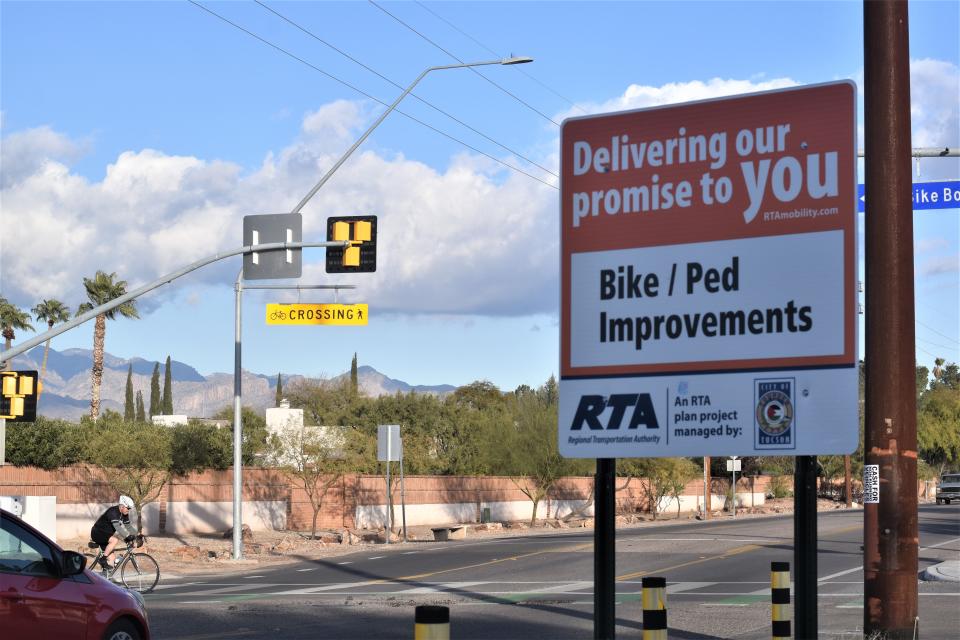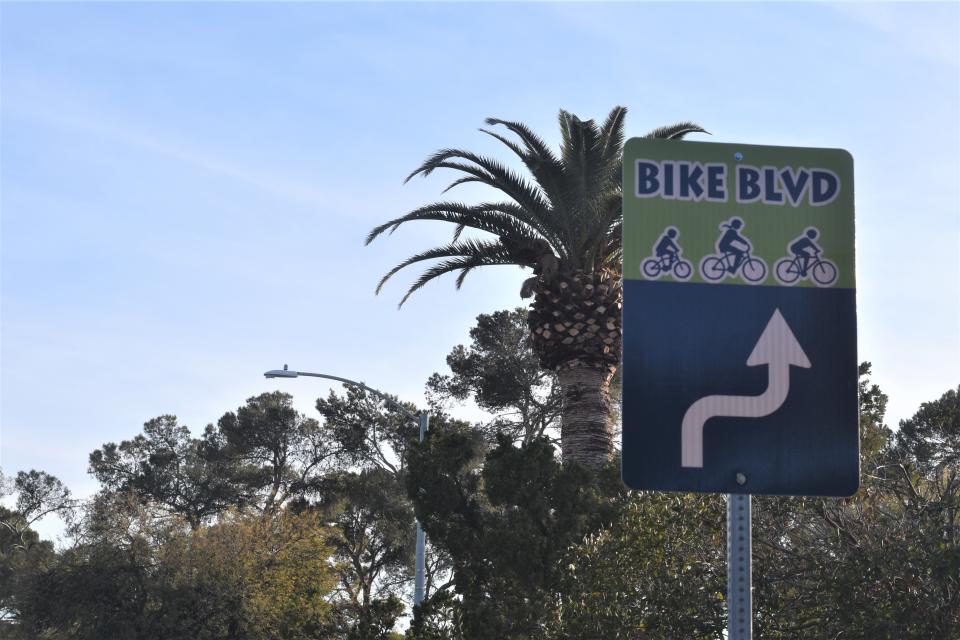Tucson mayor, other southern Arizona leaders clash over regional transportation plan
Local leaders in southern Arizona are clashing over the details of a new regional transportation plan slated to go before voters in 2025.
A 20-year transportation plan and half-cent excise tax approved by Pima County voters in 2006 is set to expire soon, and local leaders must put a new proposal before voters to avoid losing millions of dollars for transportation projects around the region.
“We are a long way from getting a settlement on a plan,” said Marana Mayor Ed Honea, who sits on the nine-member Regional Transportation Authority board.
The board wants the plan to have a robust public review before an election in May 2025.
Without a consensus on projects or construction timelines, critics say the transportation board has a lot of work in front of it.
Southern Arizona: Tucson is getting its first rapid transit bus route. Here's where, when you can ride it
Tucson 'not satisfied' with the draft plan
At the most recent RTA board meeting on Jan. 25, Tucson Mayor Regina Romero demanded a return on investment for Tucson voters from the new RTA plan, called RTA Next.
Tucson makes up more than half of the county's population and a larger percentage of economic activity, according to the county.
“I'm not satisfied with the amount of money in transit. I am not satisfied with the amount of money for the Tucson taxpayers in the main corridor element," she said, referring to the primary list of roadway improvement projects.
The projects for transit in the RTA Next plan include continuing existing RTA-funded public transportation services, as well as a bus route expansion totaling $610 million out of the $2.34 billion budget.
Romero also told the board Tucson wants some money in the new plan earmarked for road repair. While representatives of other jurisdictions have said they use their own funding for road maintenance, Romero did not budge.
“Pavement preservation for capital maintenance is a priority for Tucson … This is the investment from the RTA1 that the taxpayers in this region have paid into,” she said, adding it was “irresponsible” to not plan ahead and protect taxpayers’ investments.
Tucson has been critical of the RTA board, even threatening to walk away from the board in 2022.
The city decided to stay after a series of demands were met, including increased voting power and a commitment to solve a project funding gap caused by an increase in construction costs.
What projects are included in RTA Next?
The current draft of RTA Next, submitted to the board for review by work groups, lists dozens of transportation and infrastructure projects around Pima County, from modernizing and widening roadways to adding bike lanes, interchanges and wildlife linkages.
Tucson requested dozens of projects, including modernizing streets and adding pedestrian crossings and bike lanes. For example, it requested pedestrian improvements on Broadway and Speedway boulevards.
Oro Valley has several projects listed in the plan as well, including improvements to Lambert Lane, a major east-west roadway. Sahuarita included an intersection improvement project on Sahuarita Road and safety improvements on Old Nogales Highway, among others.
Pima County, the Arizona Department of Transportation and other cities have also submitted projects for their jurisdictions.

Marana raises concerns over delays, lack of flexibility
Marana representatives voiced concerns that one of their three corridor projects, upgrading the Cortaro Road/ I-10 interchange, likely would be delayed another decade under the current plan.
Cortaro Road is a high-traffic roadway north of Tucson.
Although a timeline for proposed projects has not yet been finalized, Honea said the concern about delaying the large project, which he said was overdue, comes from the low amount of debt service funding included in the plan. The current draft plan allocated $37 million for debt service.
“If you limit bonding, it will push that project seven or eight years down the road,” he said.
Honea also critiqued the lack of contingency funds in the plan.
Contingency funds are used to safeguard projects against inflation, economic downturn, a lack of revenue and other unforeseen expenses. According to the Pima Association of Governments, no contingency funds have been proposed.
In the RTA plan passed in 2006, contingency funds became an issue when a recession hit the U.S. in 2009, decreasing tax revenues. In response, the board used regional funds from the Pima Association of Governments to pay for the RTA projects.
Honea said if those regional funds were used for RTA Next, they would not be available for emergencies like washed-out bridges and roads.

Leaders clash on transparency of the plan
Some community leaders criticized the draft plan for its lack of flexibility in the use of funds for certain types of projects, such as those in the "safety improvement" and "active transportation" categories. These include adding bikeways, sidewalk enhancements and pedestrian safety improvements, among other projects.
Funds in these categories typically have not been set aside for specific projects, but rather for future needs, as noted by the Citizens Advisory Committee. According to the committee, voters would be asked to approve the budget for categories but not to approve which projects are included.
However, the current proposal uses all the funds for dozens of projects already listed, which some leaders worry will prohibit use of the money for future needs.
Arizona State Transportation Board Member Ted Maxwell and others said they liked the idea of identifying a few projects in the safety improvement and active transportation categories but did not support using up all the funds for those projects.
"If we fill it with nothing but projects, that takes away any flexibility. ... if we do (projects) immediately, we will not have any funds to fix stuff 20 years down the road," Maxwell said.
Sahuarita Mayor Tom Murphy said using up all the funds with listed projects also could disproportionately affect unincorporated areas such as Green Valley, Arivaca, Vail and Avra Valley, which have few road improvement projects in that category.
“Unless there is a categorical bucket where there is some flexibility, they’re not going to get a named project,” he said, asking the board how he could ask residents of these unincorporated to support a plan without projects from their communities.
Romero pushed back on the issue, reiterating that Tucson voters want to know what they are voting for, and the safety and active transportation projects are important to them.
“I think it's a good exercise to be as clear and transparent with the voters as we possibly can to ensure that there is a good return on investment for all the region's taxpayers,” Romero said.
The board, which has two more meetings scheduled this year, plans to continue discussions in March.
Reach the reporter at sarah.lapidus@gannett.com. The Republic’s coverage of southern Arizona is funded, in part, with a grant from Report for America. Support Arizona news coverage with a tax-deductible donation at supportjournalism.azcentral.com.
This article originally appeared on Arizona Republic: Pima County leaders clash over proposed regional transportation plan

